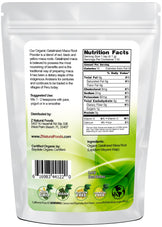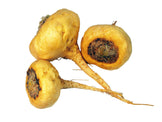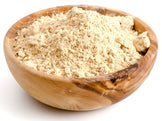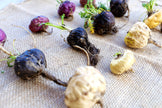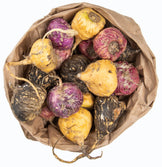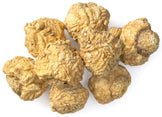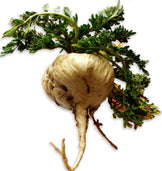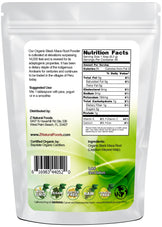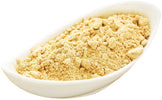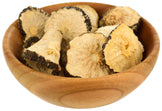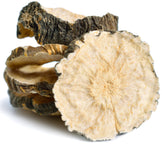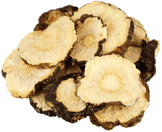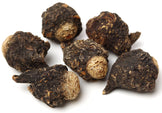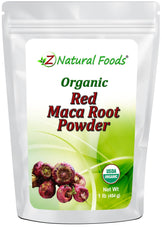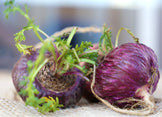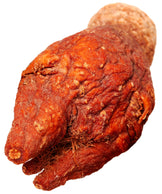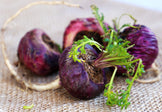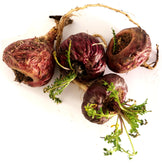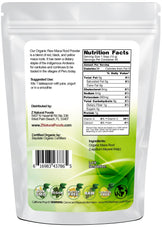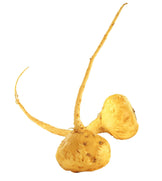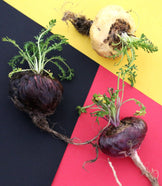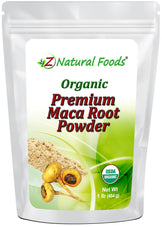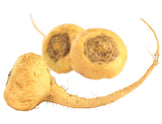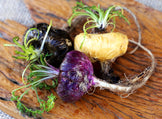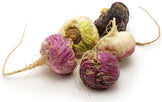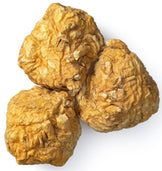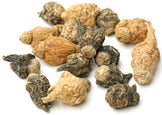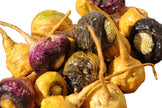Description
Description
In our other articles about this great Peruvian nourishing tonic known as maca root, I reveal:
- The differences between all the various preparations and colors of maca
- Its colorful history
- The great financial and community value this crop brings to small undernourished areas
- Understanding that while it has adaptogen-like qualities, Maca is considered a nourishing tonic
- Its' unique compounds that are found in no other food
- Some of the common dishes this superfood is used
in as a part of traditional Peruvian cooking
But we have not talked about ...
Is Maca right for YOU?
In general terms, this traditional Peruvian super root has stood the test of time and has shown to be extremely effective for just about anyone who needs a boost of nourishment. Maca has been proven in human studies to be extremely safe and very effective for both short and long-term use in very high amounts. The correct question is not whether you should use it but……
When is the best time for YOU to take Maca?
Based on the research it is very clear that maca brings to the dinner table a very unique and dense nutritional profile. In this fast-paced world, we are always eating on the run and never taking the time to properly nourish ourselves.
But Maca may be the solution we are looking for...
Hey, millions of Peruvians following an over 2000-year-old tradition can’t all be wrong, can they?
I believe they got it right.
According to a research paper titled, “Ethnobiology and Ethnopharmacology of Lepidium
“A more complete description of the composition of dry maca shows 10.2% proteins, 59% carbohydrates, 2.2% lipids, and 8.5% of
Maca contains amino acids:
- Leucine
- Arginine
- Phenylalanine
- Lysine
- Glycine
- Alanine
- valine
- isoleucine
- glutamic acid
- serine
- aspartic acid
- histidine
- threonine
- tyrosine
- methionine
- hydroxyproline
- proline
- sarcosine
Minerals found in maca:
- iron
- calcium
- copper
- zinc and
- potassium (among others) (1)
Based on Peruvian traditions, the best results are attained when using maca in the following ways...
1) Anytime you need a boost of nourishment
Whether first thing in the morning to replace your coffee (or even add to it), mid-afternoon to help you get over that “low point” of your day or pre-workout to give you that “boost”, maca will provide you with a level of nourishment that no other food can.
This simple and very versatile food can be mixed with and added to almost anything.
A wonderful mixture is with cacao and coconut milk or coconut water. to bring a more intense flavor
2)Times of high stress
While maca is not an adaptogen, it does have adaptogen-like qualities. This unique quality allows maca to stand alone. In times of high stress, your body does not just need support to allow for
3)Anytime you want to bring family, friends and a community together
Every culture has foods that bring family, friends, and community together. In Peru, it is Maca. This food is celebrated and highly regarded not just for its nourishing qualities but also for how it helps communities financially survive. Maca being a staple crop in Peru, it helps to build and nourish communities on all levels. When I was in Peru, every open market I went to, there was maca to be found.
Maca and your mood
The study below is a great example
A study showing the effects of maca on psychological symptoms and measures of sexual dysfunction in postmenopausal women are not related to estrogen or androgen content stated
(Maca) (3.5 g/d) reduces psychological symptoms, including anxiety and depression, and lowers measures of sexual dysfunction in postmenopausal women independent of estrogenic and androgenic activity”. (2)
How to get the most from your Maca:
I strongly suggest you read; What are the differences between all the Maca’s to better understand how to best use Maca. To make this simple, I suggest you stick with a gelatinized or extracted form of Maca to get the most bang for your buck. It is these forms that are the easiest to digest and absorb.
I treat maca like food. I use it every day but the times, amounts and what I mix it with will vary based on how I feel and what my needs are.
Here are 2 common ways I use maca based on my life and stress levels.
- Early afternoon nourishment (This is the most common for me). I will often mix 1-3 tablespoons into some coconut milk with a teaspoon of
cacao powder. - Feeling stressed out and the tank is low on fuel. Mix 1-3 tablespoons of maca in coconut milk with 2 ml skullcap and 2 ml milky wild oats. This would be to nourish and support the nervous system.
There is no perfect way to use this highly nutritious food other than for nourishing purposes. To be very clear, this is a tonic food and not a stimulant. What you will feel, is a true sense of wellbeing and not a buzz or rush. So, if you are used to snorting a few cans of “energy drinks” on a daily basis, this is not going to give you that same feeling.
To get the most bang for your buck, you need to really learn about your body and how it responds to various amounts of maca. If you don’t get the desired effects you are looking for, then use a bit more the next time. As long as you understand what you are supposed to feel, you will never get off track.
Maca is and always will be one of the greatest foods on earth. This food is safe, effective, nourishing, restoring and simply makes you feel good. Only time will tell if this historically great food also known as the “lost food” will also become the new “fast food” of the future to nourish our nation.
For Bulk inquiries and custom formulations click here: https://www.znaturalfoods.com/pages/bulk
References
- Gustavo F. Gonzales. 2011. “Ethnobiology and Ethnopharmacology of Lepidium
meyenii (Maca), a Plant from the Peruvian Highlands” Pubmed.gov. Accessed 3/23/18 https://www.ncbi.nlm.nih.gov/pmc/articles/PMC3184420/ - Brooks NA1, Wilcox G, Walker KZ, Ashton JF, Cox MB, Stojanovska L. 2008. “Beneficial effects of Lepidium
meyenii (Maca) on psychological symptoms and measures of sexual dysfunction in postmenopausal women are not related to estrogen or androgen content.”. Pubmed.gov. Accessed 3/23/18 https://www.ncbi.nlm.nih.gov/pubmed/18784609




